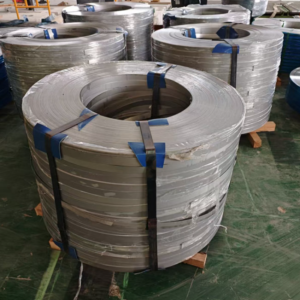Get in touch with us
Leave a message
Stainless Steel Strip offers exceptional durability and corrosion resistance, available in grades like 304, 316, and 430. With thicknesses from 0.1mm to 3mm and widths up to 600mm, it suits applications in automotive, electronics, and construction. Choose from finishes like 2B, BA, or brushed to meet aesthetic or functional needs. Custom sizes and grades are available to fit your project, ensuring high performance in demanding environments.

Stainless Strip is governed by standards like ASTM A240, A480, and A666, ensuring quality across grades such as 304, 316, 430, and 410. These standards define properties like corrosion resistance, thickness, and finish. For instance, a 304 Stainless Steel Strip aligns with ASTM A240 for general use, while 316 offers superior pitting resistance per the same spec. Classifications split into austenitic (e.g., 304, 316), ferritic (e.g., 430), and martensitic (e.g., 410) types, with grades further distinguished by finishes like 2B finish stainless steel or brushed options. Stainless Steel Strip, typically ranging from 0.1mm to 3mm in thickness, adheres to similar standards but is often tailored for precision applications.
Stainless Steel Strips comes in a wide range of sizes to suit diverse needs. Common dimensions include:
This flexibility ensures Stainless Steel Strip fits everything from small fabrications to large industrial builds.
Stainless Steel Strip comes in various types and finishes, each tied to specific manufacturing processes:
| Grade | Characteristics | Applications |
|---|---|---|
| 304 Stainless Steel Strip | Excellent corrosion resistance, Good formability and weldability, Non-magnetic, Moderate strength | Food processing equipment (e.g., trays, tanks), Architectural panels, Automotive trim, Kitchen appliances |
| 301 Stainless Steel Strip | High strength, Good corrosion resistance, Enhanced formability, Non-magnetic | Springs and clips, Automotive components, Aerospace parts, Consumer electronics |
| 316L Stainless Steel Strip | Superior corrosion resistance (especially in chloride), High durability, Low carbon for weldability, Non-magnetic | Marine hardware, Chemical processing, Medical devices, Coastal structures |
| 201 Stainless Steel Strip | Good corrosion resistance, Lower cost than 304, Moderate strength, Magnetic | Automotive interiors, Appliance casings, Decorative trims, Industrial fasteners |
A:A stainless steel strip is a thin, flat piece of stainless steel, typically under 6mm thick and available in coils or cut lengths. Made from grades like 304 or 316, it’s used for manufacturing components, springs, and decorative trim due to its corrosion resistance and formability.
A:304 stainless steel strip is cost-effective and suitable for general indoor or mildly corrosive outdoor use. 316, with added molybdenum, is better for marine or chemical environments due to superior resistance to pitting and chloride corrosion.
A:Steel sheet is a broader term for flat steel products, usually over 6mm thick, used for structural purposes. Stainless steel strip is thinner (under 6mm), often coiled, and ideal for precision applications like gaskets or shims.
A:Stainless steel strip widths typically range from 10mm to 600mm, depending on the manufacturer and application. Custom widths are available, with common sizes around 50mm to 200mm for industrial use.
A:Stainless steel strip resists rust due to its chromium content, forming a protective oxide layer. However, in highly corrosive environments (e.g., saltwater or chlorides), grades like 316 perform better than 304 to prevent rust.
A:Yes, you can paint stainless steel strip, but surface preparation is key—cleaning and etching are needed for adhesion. Use specialized coatings, as its smooth finish can resist standard paints without proper priming.

Professional manufacturer of premium specialty alloys, offering stainless steel, Hastelloy, nickel-based alloys and processing services. Delivering superior metallurgical solutions for aerospace, petrochemical, marine engineering and other demanding industries.
©2025 alloy-materials.com COPYRIGHT ALL RIGHT RESERVED.